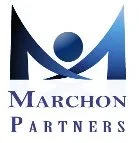
Establishing a Clear Onboarding Experience for New Hires
You just hired your newest employee and they are eager to begin working. Introducing them to the company with a warm welcome is crucial for a solid start. This process will bring your new hire up to speed and will benefit everyone with the right onboarding strategy.
What is onboarding?
Onboarding is the process of helping your employee understand their job within the company. This is accomplished by introducing them to the team, process, and tools available to achieve long-term success. According to SHRM, onboarding goes beyond an introductory orientation and usually takes one year for the employee to fully assimilate. There are three main objectives managers usually implement during the onboarding process such as:
Clear communication – Once a candidate accepts the offer, they are eager to know what the next steps are to get started in their role. Companies who clearly communicate the process from the beginning will help ensure the new hire has a specific direction to follow. Also, when an onboarding schedule, along with completion dates are clearly stated, the employee will know the actions needed and the corresponding deadlines.
Defined expectations – According to Indeed, setting clear expectations from the beginning ensures that both management and employees have the same understanding of what needs to be accomplished. This will also help establish both short and long-term goals that will benefit the employee in developing their career path and for management to realize team milestones.
Workplace introduction – Any new situation is an adjustment for the new employee, manager, and the existing staff. Having an overview of the physical or remote workspace, online tools, and introducing co-workers allows for your newest hire to understand how the entire team and company works together.
Best ways to welcome your new hires
Start before the first day – According to Indeed, a welcome email is often the ideal way to tell a new employee how they should prepare for their first day. The welcome letter should include:
- All the details of who, where and when they’ll meet upon their arrival
- Any items they need to bring with them such as signed paperwork or copies of identification
- Explaining any required dress code and what is expected on their first day
Also if any employee paperwork such as W-2 or I-9 can be completed online that will help save time and make the onboarding process easier for human resources.
Make a great first impression – The first day an employee steps into the office either physically or virtually will be their first impression. If they are greeted warmly, and their desk is ready to go, along with some personalized company swag, this will all help make their employee experience a positive one.
Introduce the company culture – The company culture will consist of the environment, values, beliefs and working style of the organization and according to Indeed includes:
- Location – physical location, hybrid, or completely remote
- Mission – what is the core mission that guides company decisions
- Policies – the rules and procedures for completing the work
- Leadership – formal or casual, consistently managed or autonomy focused
- Communication – open door policy, brainstorming, or written reports
- Incentives – praise, monetary awards, or other items when reaching top goals
How to make a solid plan for onboarding
According to Forbes Advisor, the best practices for onboarding include having an overall plan that includes flexibility, teamwork and fun. The following steps will help ensure you have a well- planned onboarding strategy.
Celebrate their arrival – Send out a company-wide email introducing the new person. Schedule a welcome lunch with your team, and offer a small gift that makes them feel appreciated as a welcomed member of the team.
Involve co-workers and leadership – Involvement of team members could help the new employee adjust by offering an assigned buddy, or job shadowing. Introducing senior leaders can also give them a better idea of how the company functions as a whole.
Keep the onboarding flexible – Different departments each follow a hiring process, which can involve requesting forms and offering training to new hires. Having the flexibility to balance paperwork, and team building activities will help the employee absorb the information easier.
Don’t overwhelm with work assignments – Giving your new employee a stack of assignments with tight deadlines when they are just starting with the company in their role usually will overwhelm them. A better approach is to have longer deadlines and regular meetings to give them a chance to learn and contribute with additional work being added gradually.
Benefits of having a smooth onboarding process
According to Zippia, the average cost for hiring a new employee is $4,700 and takes an average of 36 to 42 days for the entire process. Which means 40% of the base salary is going toward the cost of hiring a new employee with benefits. Since this is a significant investment for hiring each employee, it’s important that onboarding is a smooth process. Other factors include:
Early turnover reduced – It can take between three to eight months for an employee to be trained and fully productive according to Zippia. However, if an employee is not onboarded properly they often will leave right away and that investment of time and money is lost.
Retention is increased – Generation Z will be a third of the workforce by 2030, according to the U.S. Bureau of Labor Statistics. Many want to feel valued and prefer a mentorship environment. When onboarding encourages shared values and growth opportunities these employees are likely to stay longer versus working for companies who don’t follow this model.
Happier employees – Employees who feel included, respected and appreciated from the start are more likely to stay and be a company ambassador who will attract other new hires to join their company. According to GoRemotely, 45% of people who were employee referrals usually stayed more than four years and human resources saved $7,500 for each referred employee.
Tags: Employee Experience